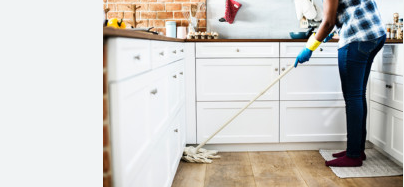A Comprehensive Manual for Effective Bug Control and Prevention
The Ultimate Step-by-Step Guide to Spraying Your House for Bugs

Spraying your house for bugs is an essential step in maintaining a pest-free environment and preventing infestations. In this step-by-step guide, we will walk you through the process of effectively spraying your house for bugs. From preparation and choosing the right insecticide to applying the spray and implementing preventive measures, this guide will provide you with the knowledge and tools to protect your home from unwanted pests.
Step 1: Identify the Targeted Bugs: Before spraying, it is crucial to identify the specific bugs you are targeting. Different bugs may require different insecticides or treatment methods. Conduct a thorough inspection of your home to identify the pests you are dealing with. Common household bugs include ants, cockroaches, spiders, and silverfish. If you are unsure about the identification, consider seeking professional assistance.
Step 2: Prepare the Area: Prepare the areas you plan to spray by removing clutter, covering or removing exposed food and dishes, and ensuring that pets and children are safely away from the area. Vacuuming and cleaning the surfaces will also help remove any existing bugs or debris, allowing the spray to be more effective.
Step 3: Choose the Right Insecticide: Selecting the appropriate insecticide is crucial for effective bug control. Choose a product that is specifically formulated for the bugs you are targeting and safe for indoor use. Read the label carefully to understand the application instructions, safety precautions, and any specific dilution requirements. Consider using environmentally friendly and pet-safe options whenever possible.
Step 4: Mix and Dilute the Insecticide: If your chosen insecticide requires dilution, carefully follow the instructions on the label to achieve the correct concentration. Use a clean sprayer or spray bottle and mix the insecticide with water according to the recommended ratio. Ensure thorough mixing to distribute the active ingredients evenly.
Step 5: Apply the Spray: Wearing protective clothing, such as gloves and a mask, begin applying the spray to the targeted areas. Focus on areas where bugs are commonly found, such as baseboards, cracks, crevices, and entry points. Pay special attention to areas where bugs hide or nest, such as behind appliances, under sinks, and in dark corners. Apply the spray in a sweeping motion, ensuring even coverage. Avoid oversaturation, as excessive moisture can lead to other issues, such as mold growth.
Step 6: Allow for Drying Time: After applying the spray, allow sufficient drying time as recommended by the manufacturer. This will ensure that the insecticide has enough contact time to effectively eliminate bugs. Keep the treated areas well-ventilated during the drying process.
Step 7: Implement Preventive Measures: Spraying for bugs is not a one-time solution. To maintain a pest-free environment, implement preventive measures. Seal any cracks or gaps in windows, doors, and walls to prevent bugs from entering. Keep your home clean and free of food debris, as bugs are attracted to food sources. Regularly vacuum and clean your house to remove any potential hiding spots for bugs. Consider using natural repellents, such as essential oils or herbs, to deter bugs from entering your home.
Step 8: Monitor and Reapply as Needed: Monitor your home for any signs of bug activity. If you notice a resurgence of bugs or new infestations, reapply the insecticide as needed. Follow the recommended application intervals provided by the manufacturer to maintain effective bug control.
Spraying your house for bugs is a proactive step in preventing infestations and maintaining a pest-free environment. By following this step-by-step guide, you can effectively identify the targeted bugs, prepare the area, choose the right insecticide, apply the spray, and implement preventive measures. Regular monitoring and reapplication, along with proper maintenance and cleanliness, will help ensure long-term bug control. By taking these steps, you can protect your home from unwanted pests and enjoy a comfortable and bug-free living environment.


